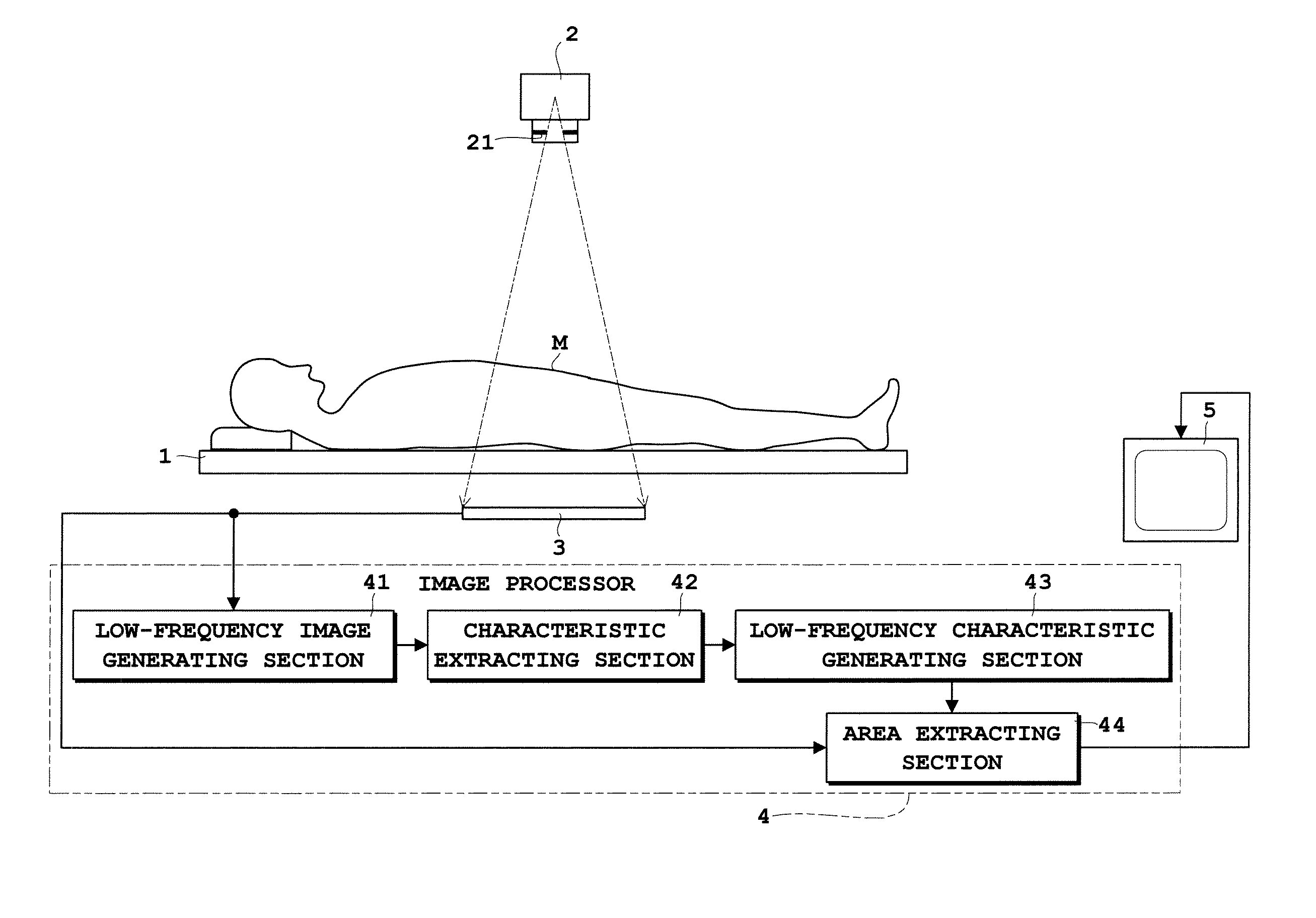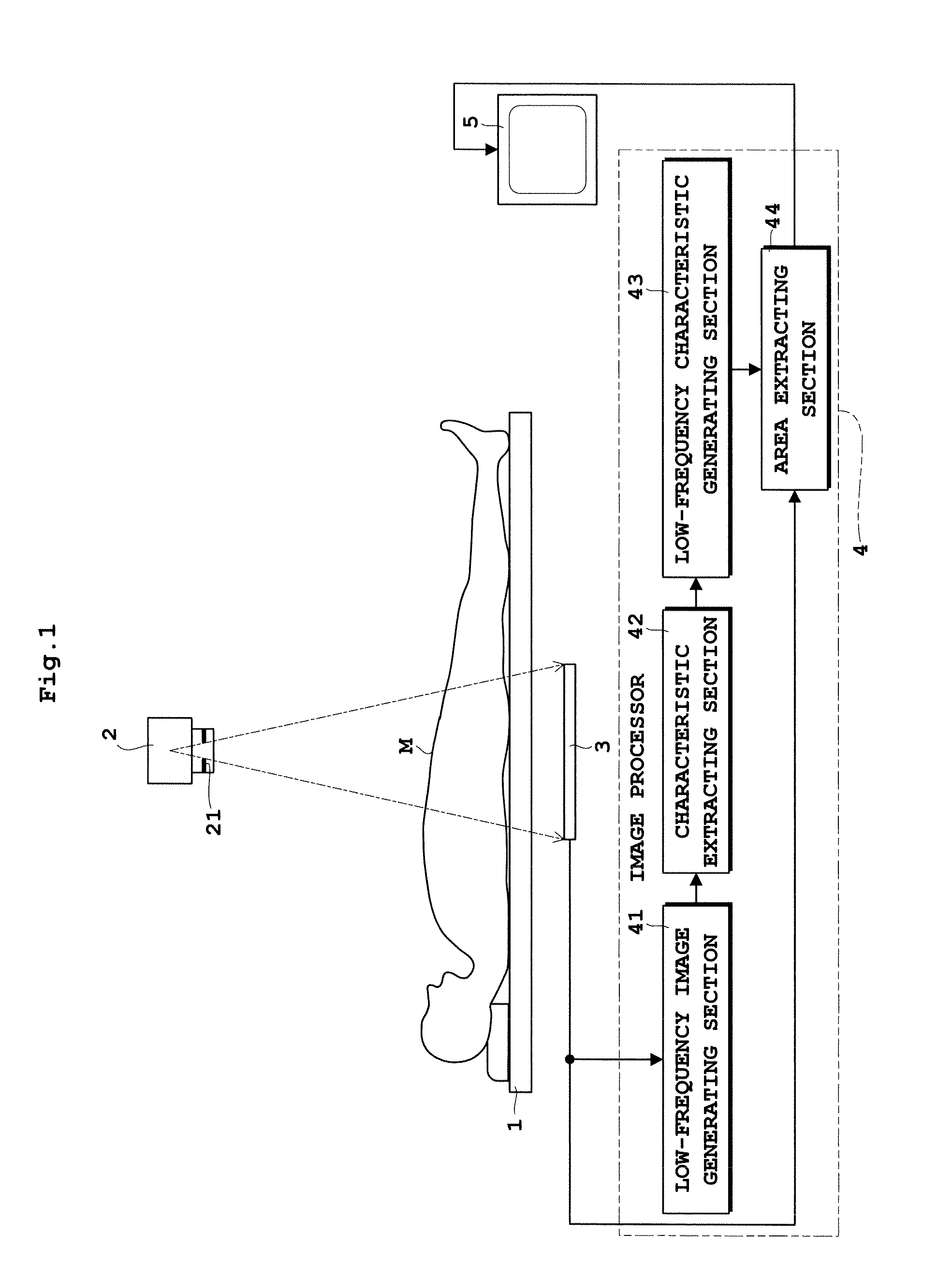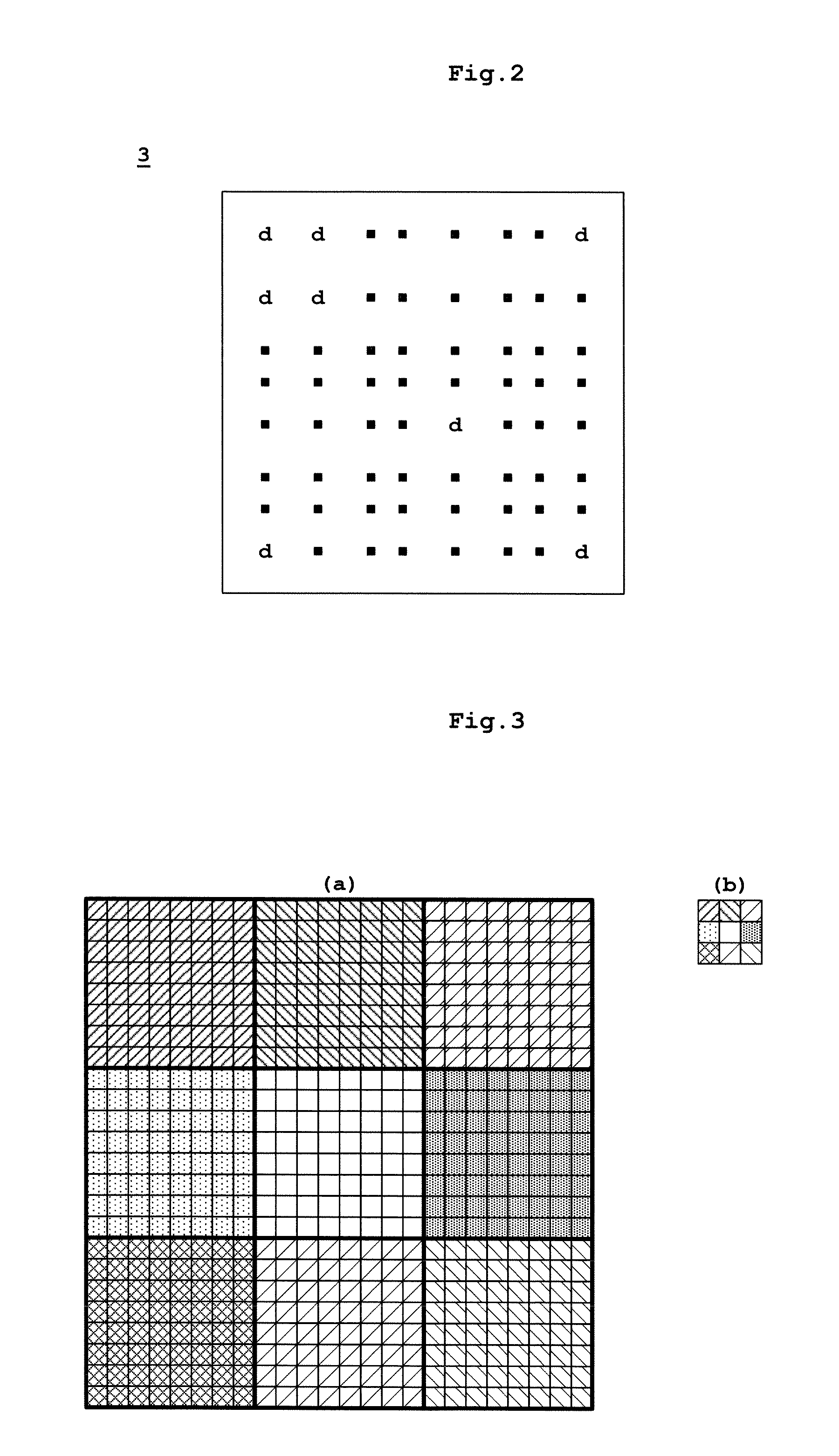Radiographic image processing apparatus and radiographic image processing program
a radiographic image and processing apparatus technology, applied in the field of radiographic image processing apparatus and radiographic image processing program, can solve the problems of increasing detection accuracy, complicated calculation, excessive patterns, etc., and achieve the effect of reducing spatial resolution, reducing noise, and reducing calculation amoun
- Summary
- Abstract
- Description
- Claims
- Application Information
AI Technical Summary
Benefits of technology
Problems solved by technology
Method used
Image
Examples
example 1
[0035]One example of this invention is to be described in detail hereinafter with reference to the drawings. FIG. 1 is a block diagram of a radiographic image processing apparatus according to an example. FIG. 2 is a schematic view of a detecting surface of a flat panel radiation detector (FPD). FIG. 3(a) is a schematic view of an image prior to reduction, and FIG. 3(b) is a schematic view of the image subsequent to the reduction. FIG. 4 is a flow chart showing a flow of a series of area extraction. FIGS. 5 and 6 are schematic views each for explanation of a Hough transform. FIG. 7 is a schematic view of an image for explanation on conditions of an edge on the left-hand side of a radiation area.
[0036]As shown in FIG. 1, a radiographic image processing apparatus according to this example includes a top board 1 for supporting a subject M placed thereon, a radiation source 2 (e.g. an X-ray tube) for emitting radiation (e.g. X-rays) toward the subject M, a flat panel radiation detector ...
PUM
 Login to View More
Login to View More Abstract
Description
Claims
Application Information
 Login to View More
Login to View More - R&D
- Intellectual Property
- Life Sciences
- Materials
- Tech Scout
- Unparalleled Data Quality
- Higher Quality Content
- 60% Fewer Hallucinations
Browse by: Latest US Patents, China's latest patents, Technical Efficacy Thesaurus, Application Domain, Technology Topic, Popular Technical Reports.
© 2025 PatSnap. All rights reserved.Legal|Privacy policy|Modern Slavery Act Transparency Statement|Sitemap|About US| Contact US: help@patsnap.com



